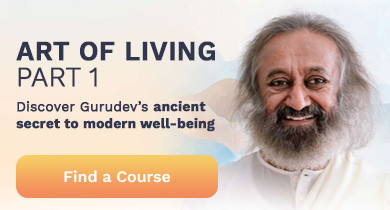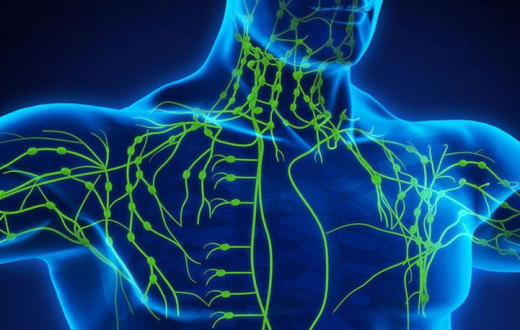By Anuradha Gupta | Posted: August 20, 2019
We all know that a nutritious, balanced diet with adequate exercise and low stress is vital to good health and managing or preventing illness. But processed and fast foods, sugary drinks, salt, and saturated fats are a significant part of most of our diets today and oh so easy and affordable.
What impacts our diet? Imagine a teen; a pregnant woman; someone with celiac disease or diabetes; a vegetarian; someone from Okinawa or Syria; a homeless person; a high-powered CEO; or the average Joe with access to low-cost, high-calorie, nutrient-poor food.
Our diet, in short, depends on food availability and security, our cultural background, age, gender, lifestyle, eating habits, socio-economic status, and our access to junk food. When we attempt to change our diet, we usually do so with three objectives in mind:
Managing our nutrition
Managing concerns like high cholesterol, diabetes, or food allergies
Managing our weight for cosmetic or medical purposes
These are all honorable goals, and seem easy enough to achieve: so why do so many of us fall back into a cycle of unhealthy eating?
The Case of the Smith Family
Some factors of our diet are not in our control--but what factors are? What can we be mindful of and manage, regardless of our situation?
Let’s take a look at the Smith Family.
John Smith works in a suburban factory and is obese with high cholesterol. His wife, Jane, is an overworked nurse who is overweight, and has hypothyroidism and generalized anxiety disorder. Their 11 year old, Jack, studies in public school and seems healthy, but has food allergies, is consistently underweight, and has some issues focusing.
What do we think their Monday night looks like, given the information above?
In John’s circle, junk food is cheaper than whole, natural, and fresh food. Marketing is also aggressive, and he sees ads for fast food everywhere. John picks up McDonalds: a Southwest salad with grilled chicken for Jane, chips, apples, chocolate milk and soda on his way home. He has a strawberry shake (almost 500 calories), with a Big Mac (another 500 calories) and fries (500 calories). Jack is allergic to gluten and nuts and takes the beef patty with fries and a diet coke. John insists Jack eats an apple but doesn’t take one himself. Jane, being a nurse, is very aware of her health, but is exhausted at the end of her work day. She and John argue about his dinner, and he promises to do better next time.
John and Jane, exhausted from work, live a sedentary, high-stress lifestyle. After a tough day working on the assembly line, John is too tired to cook or to get any exercise in. He now wants to sit and flip channels and eat chips for comfort. Jane tries to walk whenever she can, and goes to the community gym on the weekends. She tries to drag John along, but he has back pain and arthritis so they’re looking for a membership to a gym with a pool where he can swim. Jack gets some exercise at P.E. in school, but spends most of his time at home playing video games. Luckily, the school lunches are getting healthier but options for kids with allergies are limited. Jack sits at the nut-free table in school, and John normally packs him a gluten and nut-free school lunch.
The family really does try, but find it difficult to keep new habits up, especially with all the nutritional misinformation out there. John makes some gluten-free pasta with chicken or turkey on the weekend, and mixes in fresh pasta sauce from his Grandmother’s recipe, but uses tons of cheese and oil. Jane grills chicken with many colorful veggies, but has a lot of cheesy potatoes on the side. Every magazine Jane or John pick up lists the top five healthiest foods, or how they can lose 30 lbs. in 5 weeks or the intense 5-minute fat burning exercise regimen. It’s mighty confusing, despite Jane’s training as a nurse.
And so, the cycle continues. There is a direct correlation between poor eating habits and mental health. For instance, depression and anxiety are often linked with eating disorders, including anorexia and binge eating. Jane has anxiety, so she goes through phases of crash dieting, and the additional stress on her body sets her up for failure. She doesn’t lose any weight, doesn’t feel more energetic, and Jack and John refuse to eat her diet food with her. Food is meant to be a social activity, so Jane feels even more isolated and frustrated--she now cheats on her diet and becomes even more stressed about her health.
Does dieting help?
The obesity epidemic continues, despite the fact that 45 million Americans go on a diet every year, with 50% on fad or crash diets that promise quick weight loss (Boston Medical Center).
It’s telling that Barbie dolls have been role models for girls for over 50 years, and it’s tragic that half of the girls aged 9 or 10 in the US claim that they feel better when they are dieting. Although trends are changing, Barbie dolls have historically had proportions that are unnatural: those measurements on a live woman would force her to walk on all fours to get around, and the odds of finding a single woman with Barbie’s waist ratio are 1 in 2.4 billion (with the world population at 7.5 billion!)***
With media and screens presenting unnaturally thin, toned, or buff images of people that many of us aspire to be like, a lot of people worry or even obsess over weight management for cosmetic reasons, and not because of the risks associated with increased weight. Eating disorders, exercise injuries, ailments due to fad diets, and cosmetic surgeries are rampant. What about health, fitness and nutrition?
The Decade of Action on Nutrition
Growing up, many of us studied different food types and their roles: carbohydrates, fats, proteins, vitamins, and minerals. For instance, we know that not getting enough Vitamin C can lead to scurvy! But despite these guidelines, over the past few decades, the world has witnessed a simultaneous crisis of malnutrition and obesity. The UN has even dubbed the period of 2016-2025 “the Decade of Action on Nutrition”. Consider these statistics:
88% of nations and 2 billion people suffer from malnutrition worldwide.
Undernutrition causes about 45% of deaths among children under 5.
At home in the US, 66% people are obese and overweight (a form of malnutrition), of which 1 in 3 adults and 1 in 6 kids are obese**.
Around ½ of Americans have 1 or more weight-related chronic ailments like cardiovascular illnesses, type-2 diabetes, or some forms of cancer.
When we think about malnutrition, we normally think of an emaciated child in a developing country. But there are different forms of malnutrition. Even in the same family, Jane presents with anxiety, Jack has allergies, and John has high cholesterol.
Jane is peri-menopausal and anemic; an iron deficiency is the most common form of malnutrition, and can even impact cognitive development, especially amongst smaller children.
A child with a low weight-to-height ratio could be a sign of undernutrition; Jack is not eating less, but has food allergies and maybe some absorption issues.
John has hypertension caused by obesity, which is a form of over-nutrition. It’s not always about eating too much food, but the wrong kinds of foods: and obesity isn’t just the bane of the wealthy, but is a real concern for those in lower socioeconomic brackets, including those in developing countries. Often times, junk food is simply cheaper and more available.
Traditional and Ayurvedic Nutrition
A lot of traditional cultural diets, like the Mediterranean, West African, or rural Japanese diets, are intrinsically very healthy.
Ayurveda, which translates to “The Science of Life”, is a system of medicine in India, approved by WHO and is considered a form of Alternative Medicine in the US; it uses diet, lifestyle, herbs, yoga, meditation, and various therapies to prevent and manage ailments.
Ayurvedic professionals provide an individualized protocol for every client. Ayurveda has a triad of health management; diet, or aahar, sleep, or nidra, and a balanced life, or brahmacharya. Ayurvedic experts use food as medicine, both preventative and curative. We analyze our clients’ diets and recommend a diet and lifestyle plan for everyone, whatever their state of health or imbalance.
In the second installment of this series, we will delve deeper into Ayurvedic nutritional guidelines, comparing them with other cultural diets and analyzing the Smith family’s diet from the Ayurvedic perspective.
In the third part, we will compare the Ayurvedic diet with common medical/weight-loss diets, like Keto, Weight Watchers, and the Paleo diet.
*FAO, 2016
**CDC 2015
*** (Rehabs.com, a site for locating mental health treatment centers in the US)
If you would like to try Art of Living’s free online guided meditation session and know more about SKY Breath Meditation, join Beyond Breath.
Anuradha Gupta is an Engineer, MBA and Ayurvedic Wellness Counselor. She has a corporate background and volunteers for Art of Living and other nonprofits. You can find her on Facebook or on LinkedIn.





























